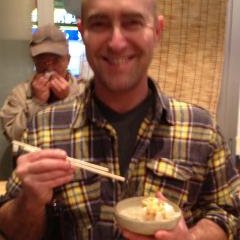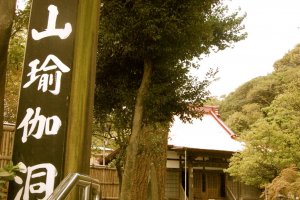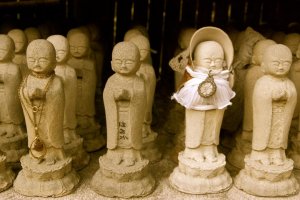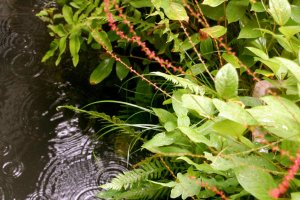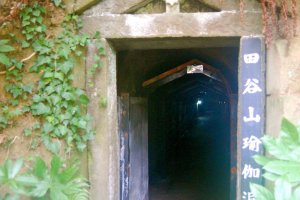Taya cavern is an extensive cave carved into a hillside on the outskirts of Kamakura by Shingon Buddhist monks from 1192 until 1720. It is located on the grounds of the Jousenji temple, and as it is rather off the beaten path, you won’t see many tourists at this fascinating historic site. Shingon is one of the early sects of Buddhism to come to Japan; history has it that it was first brought to Japan in 804 AD by Kukai, a Japanese monk who traveled to China and brought back the teaching. The word “Shingon” is the Japanese reading of the Chinese word, Zhēnyán (真言),which is a translation of the Sanskrit word Mantra, or “mystical words.” Shingon is the Japanese school of Esoteric Buddhism in which enlightenment is considered to be contingent on being initiated into a secret teaching passed from master to disciple. Included in the teachings of Shingon are the use of Mandalas- sacred pictorial representations, and Mantra- mystical words. Part of what makes a jaunt through the Taya cavern so fascinating is that one is up close to antique carvings of Buddhas, Buddhist saints, fantastic creatures, and Mantras carved in kanji and Sanskrit- the ancient Indian language in which the Buddhist sutras, or sacred texts- were originally written.
The Taya cavern is a winding passageway between 1 and 1.5 kilometers deep carved into an inconspicuous hillside behind the Jousenji temple. It is dimly lit along the way with weak LED bulbs, and visitors are given a small candle to help illuminate the carvings one sees along the way. I would recommend bringing a flashlight in order to better see the carvings. Inside it is cool and refreshing- and is a great place to visit on a hot day. On the September Saturday that we visited, there were no other visitors in the cave for the 45 minutes we were inside. The passageways open up into 17 domed chambers with intricate carvings up the walls and around the domes. Natural streams trickle through the walls, and are channeled along the walkways in some of the chambers. Traditionally, Shingon monks would practice their austerities in the cave, and not leave- as they engaged in meditation, chanting, carving, and fasts- for days or weeks at a time. Pay close attention to what you see: photographs are not permitted inside the cave.
The grounds of the temple are beautiful, with statues of historical figures from the Shingon sect, as well as a large area dedicated to hundreds of Jizo statues. Jizo is a bodhisattva revered among Japanese Buddhists, and the protector of travelers, expectant mothers, and children. At the temple grounds, the Jizo statues are placed to protect the souls of children who have died, including miscarriages and abortions. The temple has zazen- sitting meditation- open to the public on Saturday afternoons at 5 PM, and while no one is turned away, the chief monk pointed out that non-Japanese speakers will not be able to follow the service or the instructions. At the ticket counter, they sell prayer beads and a few other Buddhist devotional items, but they are also wary of selling them to tourists, as they consider the items to be sacred and only for Buddhist practitioners.
Despite the somewhat chilly reception by the devout monks at the temple, the Taya cavern is definitely worth the visit. Here you will find an intact, historical Buddhist site in which you can get up close and intimate with ancient carvings without feeling like you are in a crush of other tourists.

